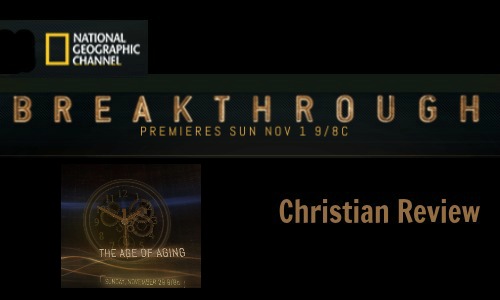Has Science Finally Found a Way to Slow Aging? – National Geographic’s ‘Breakthrough’ Ep. 4 Review

Ron Howard, one of America’s most beloved Hollywood directors (and actors), has brought something very interesting to the table, with the help of National Geographic Channel’s (@NatGeo) new mini-series called “Breakthrough” (#Breakthrough), which airs each Sunday night at 9/8c on NatGeo through Dec. 13.
Each episode of the series features a famous director, and Episode 4 brings us Mr. Howard’s trademark storytelling.

Ron Howard, director of the Age of Aging episode of Breakthrough. (photo credit: National Geographic Channels/Erin Patrice O’Brien)
And he does not disappoint. These episodes feature more than just cutting edge news on the latest world-changing breakthroughs in technology; they feature the human drama behind them.
In “Age of Aging,” we see astonishing research being done that proves something remarkable: it might very well be possible to modify aging in humans (i.e. increase our longevity in dramatic measures) by simply changing a gene. In fact, researchers in this field have already shown it possible to almost double the expected lifespan of animals in lab experiments (mice, worms, etc.) by simply changing one gene.
We also learn about new drugs that can do more than just treat the diseases people have when they get older; they treat aging itself.
But we also see the human drama. Will a small group of scientists be able to convince the FDA — an entity that had thus far resisted the idea of issuing medicines to treat aging itself — to change their policies and thus pave the way for these transformative new drugs to be developed and someday reach the public?
There’s already one potentially age-modifying drug in the pipeline: metformin.
We also meet some of the amazing people working on these breakthroughs — the intriguing Laura Deming, for example, a genius who never went to school yet taught herself everything from calculus to biology, and then enrolled in MIT at the age of 14.
We meet a sweet elderly couple, Martha and Ed Kamin, married and committed to each other for decades, and we become eye-witnesses to one of the most difficult decisions the couple has made. The heartrending drama of aging takes on flesh and bone.

ROCHESTER, N.Y. – Martha Kamin smiling while talking about old stories with her husband Ed Kamin. (photo credit: Asylum Entertainment)
While doubling a person’s lifespan would be amazing (though, honestly, I’m not sure I could endure two lifetime’s worth of watching my San Diego Chargers disappoint us every year), I think what’s especially exciting is the prospect of using these treatments to make the lives of the elderly more active, healthy, and just plain enjoyable. That’s the hardest part of aging — watching loved ones lose the ability to be who they are and do what they love to do the most. Improving that phase of life would a monumental achievement definitely worthy of the title “breakthrough.”
To read my reviews on the other five episodes in the “Breakthrough” series, follow these links:
Episode 1, “Fighting Pandemics” by Peter Berg
Episode 2, “More Than Human” by Paul Giamatti
Episode 3, “Decoding the Brain” by Brett Ratner



